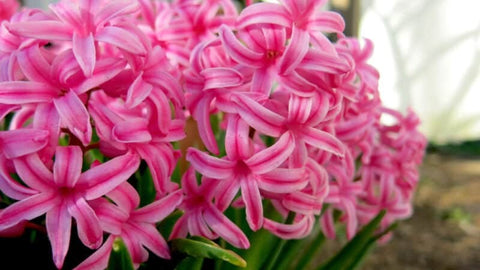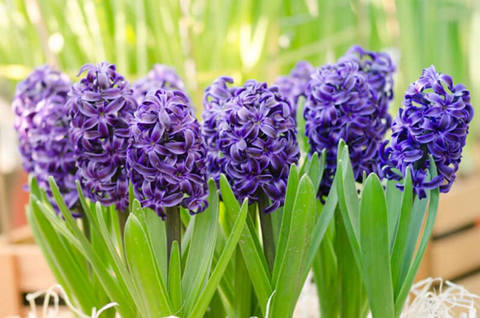As the days grow shorter and the air turns crisp, the arrival of autumn transforms our outdoor spaces into a tapestry of rich, earthy colors. While many gardeners focus on planting traditional fall foliage or decorating with pumpkins and gourds, there's a unique and enchanting way to celebrate the season: creating a natural fall fence using plants as living screens. These living screens not only offer privacy and a touch of elegance but also immerse your garden in the beauty of fall. In this comprehensive guide, we'll explore the myriad benefits of using plants as natural fences, selecting the right plant species, design ideas, and essential maintenance tips to ensure your fall garden shines.The following content also has some reference value for raised garden beds.
The Allure of Natural Fences
Natural fences, typically comprised of carefully selected plants and shrubs, provide a host of advantages that set them apart from conventional fences or walls:
Seasonal Splendor
Natural fences undergo seasonal transformations, offering year-round visual interest. In autumn, they burst into a blaze of fall colors, creating a living masterpiece that evolves with the season.
Wildlife Haven
Living screens provide shelter and sustenance for local wildlife, fostering a harmonious ecosystem that benefits both you and nature. They attract birds, insects, and other critters, enhancing the biodiversity of your garden.
Environmental Consciousness
Plant-based fences are eco-friendly alternatives to traditional fences constructed from materials like wood or metal. By reducing the demand for manufactured products, they contribute to a greener and more sustainable planet.
Privacy and Noise Reduction
Well-planned natural fences can offer much-needed privacy from neighbors and buffer against street noise, creating a tranquil and secluded outdoor sanctuary.
Selecting the Right Plant Species
The key to a successful natural fall fence lies in selecting the appropriate plant species. Consider the following factors when choosing your plant varieties:

Climate Compatibility
Opt for plants that thrive in your local climate and soil conditions. Native species are often an excellent choice, as they are well adapted to your region.
Growth Rate
Take into account how quickly your chosen plants will reach your desired height and thickness. Some plants may take several years to mature, while others grow more rapidly.
Foliage and Fall Colors
Select plants with foliage that undergoes a captivating color transformation in the fall, adding to the seasonal charm of your living fence. Options like maples, dogwoods, and burning bushes are renowned for their vibrant autumn hues.
Evergreen vs. Deciduous
Determine whether you prefer an evergreen screen that maintains its coverage throughout the year or a deciduous one that sheds its leaves in the fall, revealing captivating bare branches with unique structures.
Top Plant Choices for Your Natural Fall Fence
Here are some exceptional plant choices that can elevate your natural fall fence and bring out the beauty of autumn:
Red Twig Dogwood (Cornus sericea)
- Foliage: Green during summer, turns a brilliant red in fall.
- Notable Feature: Striking red stems in winter.
- Growth: Moderate
Red Twig Dogwood is prized for its graceful red branches that add a burst of color to your winter garden once the leaves have fallen in autumn.
Virginia Creeper (Parthenocissus quinquefolia)
- Foliage: Green in summer, turns vibrant red in fall.
- Notable Feature: Fast-growing and can cover large areas.
- Growth: Rapid
Virginia Creeper is a rapid-growing vine, perfect for covering fences or walls, and boasts vibrant red foliage in the fall.
American Beautyberry (Callicarpa americana)
- Foliage: Green during summer, turns bright purple in fall.
- Notable Feature: Showy clusters of purple berries in late summer and fall.
- Growth: Moderate
American Beautyberry offers lovely fall foliage and produces striking purple berries that attract birds, enhancing the visual appeal of your living fence.
Northern Bayberry (Myrica pensylvanica)
- Foliage: Evergreen with aromatic leaves.
- Notable Feature: Waxy gray berries in fall and winter.
- Growth: Moderate
Northern Bayberry is an evergreen shrub with aromatic leaves and decorative waxy berries that emerge in the fall and winter, adding a unique touch to your natural fence.
Burning Bush (Euonymus alatus)
- Foliage: Green during summer, turns a brilliant red in fall.
- Notable Feature: Dense growth and intense fall color.
- Growth: Moderate

Burning Bush is renowned for its striking red fall foliage, making it an ideal choice for a fall-themed natural fence.
Design Ideas for Your Natural Fall Fence
Once you've made your plant selections, it's time to design your natural fall fence. Here are some creative ideas to inspire you:
Mixed Plantings
Combine several plant species to create a diverse and visually stimulating living screen. For instance, pair the vibrant red foliage of Burning Bush with the striking purple berries of American Beautyberry for a dynamic autumn display.
Archways and Entry Points
Design your natural fence with archways or entry points covered in climbing plants like Virginia Creeper. This adds an element of sophistication and provides a grand entrance to your garden.
Layered Effect
Plant taller species like Red Twig Dogwood at the back and shorter varieties like Northern Bayberry in front to create a layered effect that adds depth to your natural fence. This approach allows the colors and textures of each plant to shine and provides a multidimensional visual experience.
Seasonal Transition
Transition your natural fence from summer to fall by incorporating plants with late-summer blooms or interesting foliage. As autumn arrives, the vibrant fall colors will seamlessly replace the fading summer beauty.
Maintenance Tips for Your Natural Fall Fence
To ensure that your living screen remains a stunning focal point in your garden throughout the fall season and beyond, follow these maintenance guidelines:
Pruning and Trimming
Regularly prune and trim your plants to maintain their desired shape and size. This practice also encourages healthy growth and vibrant foliage.
Mulching
Apply a layer of organic mulch around the base of your plants to retain moisture, regulate soil temperature, and deter weeds. Mulch also enhances the overall aesthetics of your natural fence.
Watering
Provide adequate water to newly planted shrubs and trees until they establish deep root systems. Monitor soil moisture levels, especially during dry spells, to ensure your living screen remains healthy.

Fertilizing
Fertilize your plants as needed, following the specific requirements of each species. Generally, a balanced, slow-release fertilizer is suitable for most natural fence plants.
Pest and Disease Management
Check your plants frequently for indications of pests or diseases, and take the necessary action to deal with any issues promptly. Proper maintenance reduces the risk of infestations.
Conclusion
Creating a natural fall fence using plants as living screens is a captivating way to celebrate the beauty of autumn and enhance your garden's privacy and aesthetics. By carefully selecting plant species that thrive in your climate and considering design elements that suit your preferences, you can craft a living masterpiece that evolves with the seasons. As you embark on this journey of transforming your outdoor space, remember that a well-maintained natural fall fence not only offers a sense of enchantment but also fosters a more sustainable and eco-friendly garden, ultimately benefiting both you and the environment. So, embrace the allure of natural fences and immerse yourself in the enchanting colors of fall. Your garden will thank you for it.









